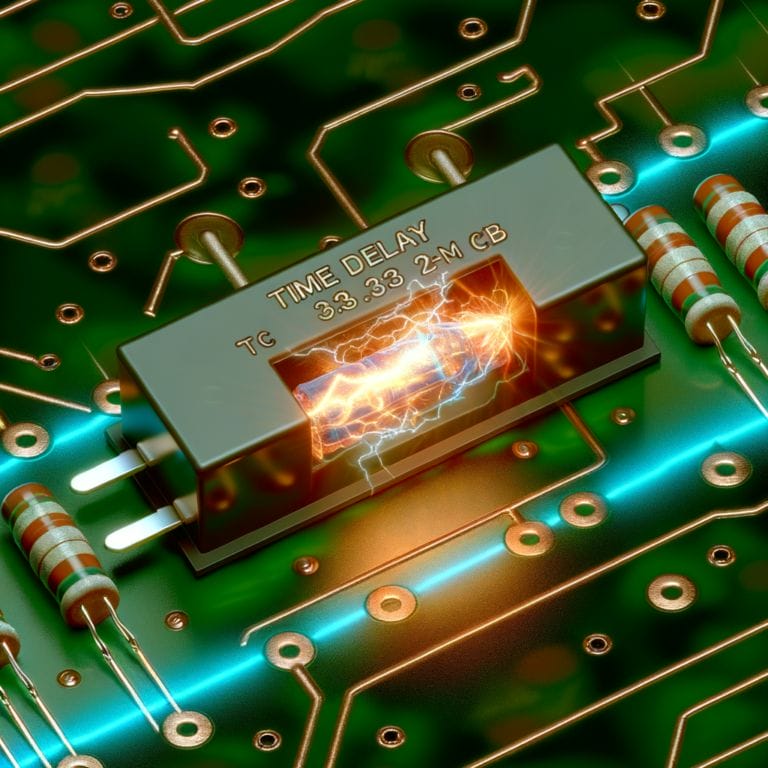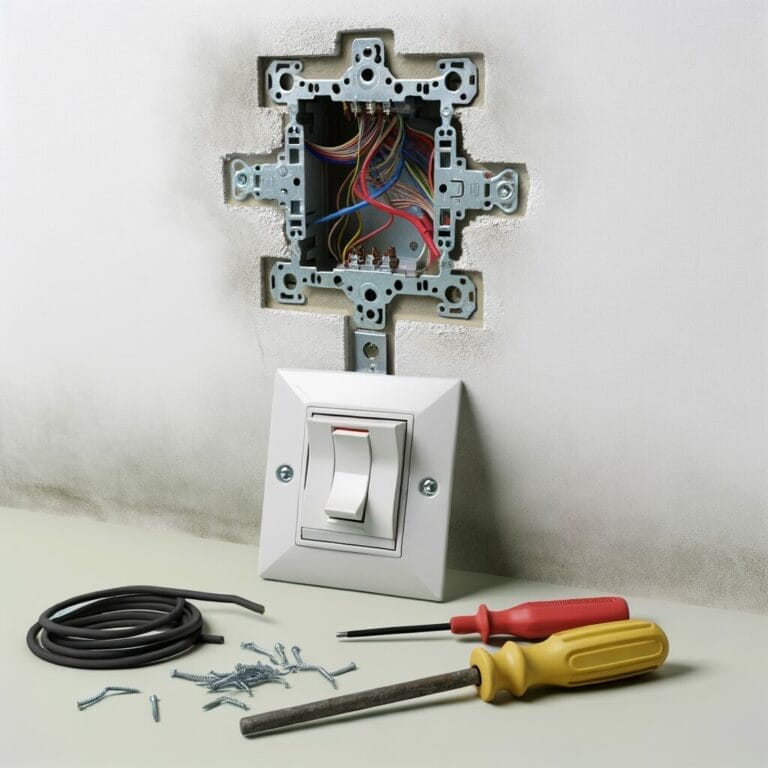Ground and Neutral On Same Bus Bar: Crucial Wiring Insights
In the intricate dance of electrical wiring, the run of neutral and ground wires often becomes a complex two-step, especially in the main panel. in our ‘Ground and Neutral On Same Bus Bar’ guide, we aim to untangle the finer points of this crucial aspect, particularly the concept of having ground and neutral on the same bus bar.
Key Takeaways
- Neutral and ground wires serve different functions in terms of handling loads, and they should be treated differently, whether on a sub panel or the main panel.
- Separating ground and neutral wires on a bus bar ensures the safe operation of electrical systems.
- Ground and neutral wires may share a post on the same bus bar only at the main service panel connected by a screw.
- Regular inspections, conducted by a certified inspector, and adherence to safety guidelines are crucial for ensuring safety and compliance in electrical systems.
Understanding Grounding and Neutral Wires in Electrical Systems

To fully understand the workings of an electrical system, we must delve into the core functions and significance of neutral and ground wires. Ground wires create a direct path for electrical energy to return to the ground in case of a fault, preventing the possibility of an electrical shock if a live wire comes into contact with a metal object.
Neutral wires, on the other hand, are the return path for the electrical current in normal operating conditions. They maintain the circuit’s balance by carrying the current back to the source, known as the main breaker, after it has passed through the electrical device.
Proper grounding is crucial for safety. An improperly grounded electrical system can lead to dangerous situations such as electrical shocks or even fires. Therefore, both neutral and ground wires play pivotal roles in the safe operation of electrical systems, both on the main panel and sub panel.
The Significance of Separating Ground and Neutral Wires on a Bus Bar

While they often share a bus bar in electrical systems, there’s significant importance in separating ground and neutral wires, this distinction can be seen with the use of copper lugs and screws. This separation of the neutral and ground connections isn’t just best practice—it’s a crucial aspect of safe, efficient electrical installation that fosters innovation and progress in the electrical field.
Separating ground and neutral wires on a bus bar using lugs has several benefits and implications:
- It ensures the safe operation of electrical systems by preventing harmful surges from reaching the devices connected to the system.
- It allows for the correct operation of circuit breakers and fuses, which are designed to interrupt the power supply when they detect an excessive current flow.
- It aids in minimizing electromagnetic interference (EMI), which can disrupt the operation of sensitive electronic devices.
- It facilitates adherence to electrical codes and regulations, which are designed to promote safe electrical installation practices.
- It provides a clear path for electricity to return to its source, the main breaker, enhancing the efficiency of the electrical system.
Exceptional Circumstances: Ground and Neutral Wires on the Same Bus Bar

In certain exceptional circumstances, neutral and ground wires share the same bus bar in the main panel, which is permissible under specific load conditions. This configuration is usually seen at the main service panel, where the neutral bus and grounding bus are combined.
Here, the ground wires and neutral wires connect on the same bus bar, forming the system’s grounding and bonding point. However, this copper connection should only happen at the service main to prevent current from flowing on green coated metal parts that shouldn’t carry current.
Ensuring Safety and Compliance in Electrical Systems

Building on the understanding of ground and neutral wire configurations, it’s necessary to focus on best practices for proper installation, regular inspections, and understanding the consequences of improper setups. Regular inspections of neutral and ground connections on the bus bar, especially in the main panel, help to prevent potential issues from escalating.
Any alterations to the electrical system must adhere to the established safety and compliance guidelines. Proper installation of ground and neutral wires reduces the risk of electrical shocks and fires. Understanding the consequences of improper setups can help in developing innovative solutions to mitigate these risks.
Let’s illuminate this further with these key points:
- Regular inspections of ground and neutral connections on the bus bar prevent potential issues from escalating.
- Any alterations to the electrical system must adhere to the established safety and compliance guidelines.
- Proper installation of ground and neutral wires reduces the risk of electrical shocks and fires.
- Understanding the consequences of improper setups can help in developing innovative solutions to mitigate these risks.
- Continuous learning and keeping abreast with the latest wiring insights can enhance safety and efficiency of electrical systems.
Is the Height of a Light Pole Related to Proper Wiring of Ground and Neutral on the Same Bus Bar?
Proper street lighting height guidelines are essential for ensuring safety and visibility in outdoor environments. When it comes to the wiring of ground and neutral on the same bus bar, the height of a light pole may not have a direct correlation. However, following proper height guidelines is crucial for effective illumination.
Professional Insights and Recommendations for Ground and Neutral Wires

A common mistake in electrical wiring is connecting ground and neutral wires to the same bus bar. While it might seem like a time-saver, it can create potential safety hazards. The ground and neutral wires serve different functions and thus should be treated differently.
However, there’s one exception. In the main service panel, which gets the bare fact of the electricity first entering a home or building, the neutral and ground wires run to be connected to the same bus bar. But beyond this point, in any subpanels, they must be separated.
Innovation in this field involves keeping up with the latest wiring insights and trends. For instance, some newer electrical panels come with labels indicating where to connect the ground and neutral wires. This can significantly reduce wiring errors, resulting in safer and more reliable systems.
Conclusion
In wrapping up, we’ve delved into the importance of separating ground and neutral wires on a bus bar with the help of a screw, with some exceptions. We’ve underscored the need for safety and compliance in electrical systems. It’s our hope you’re now more informed and can make better decisions when dealing with electrical wiring.
Remember, professional advice is crucial when handling such matters, including the proper setup of neutral and ground connections in sub and main panels.
Stay safe and keep learning!
Frequently Asked Questions
What is the significance of having the ground and neutral on the same bus bar?
Having the ground and neutral on the same bus bar allows for both conductors to be properly connected, ensuring a safe and reliable electrical system.
Can ground wires and neutral wires be connected to the same bus bar in a panel?
Yes, the ground and neutral wires can be connected to the same bus bar in a panel, as long as it is the main electrical panel and not a sub-panel.
What is the purpose of a circuit breaker in relation to the ground and neutral wires?
The circuit breaker acts as a safety mechanism to shut off and disconnect the electrical circuit in case of a fault, ensuring that the ground and neutral wires are properly protected.
Are there any specific codes or regulations regarding the connection of ground and neutral wires?
Yes, there are specific codes and regulations that dictate how ground and neutral wires should be connected, and it’s crucial to adhere to these guidelines to ensure electrical safety and compliance.
Can a sub-panel have ground and neutral wires on the same bus bar?
No, as per the inspector’s report, a sub-panel should have separate posts on bus bars for ground and neutral wires, as per electrical codes and safety standards.







